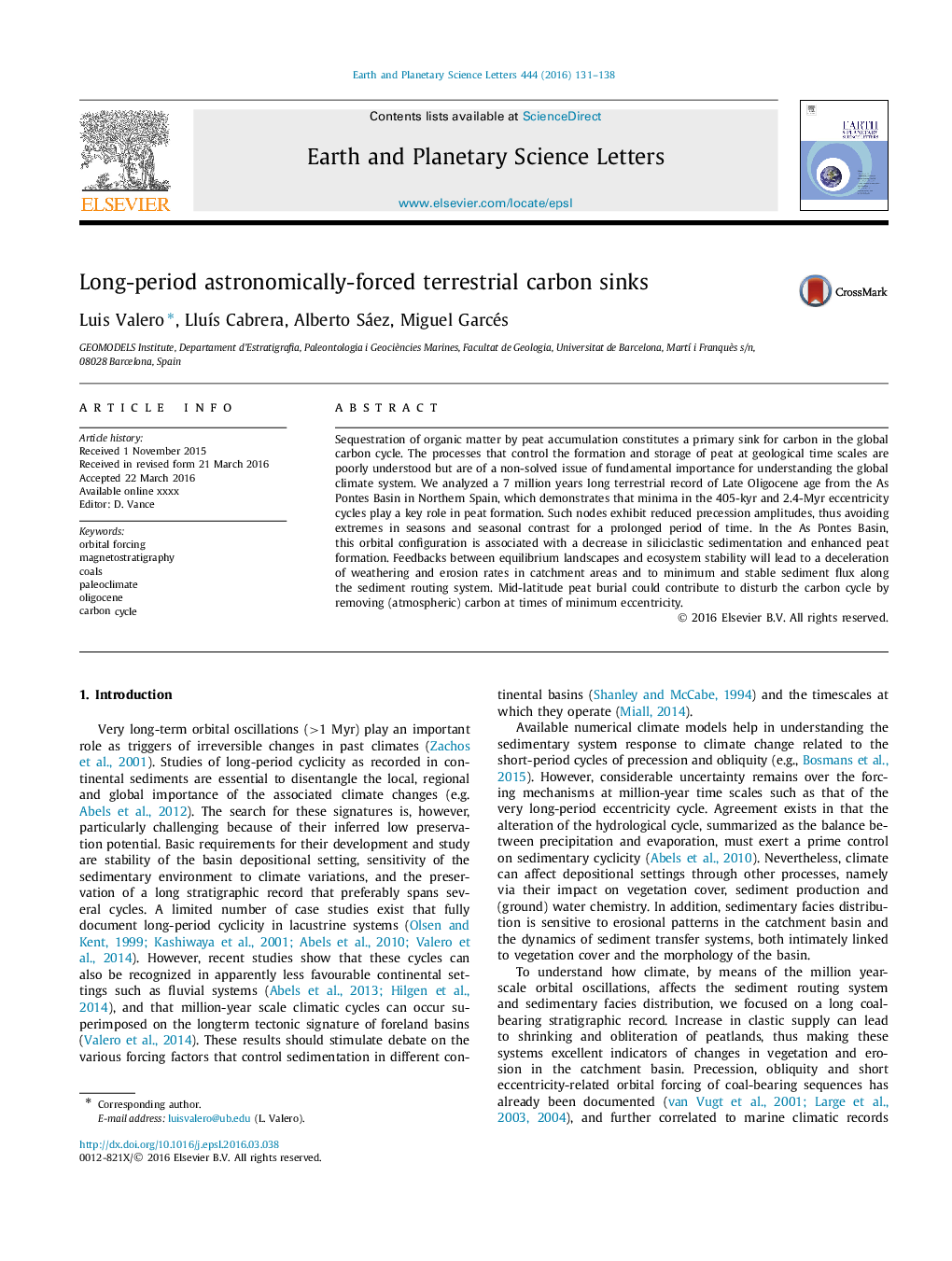| Article ID | Journal | Published Year | Pages | File Type |
|---|---|---|---|---|
| 6427494 | Earth and Planetary Science Letters | 2016 | 8 Pages |
Abstract
Sequestration of organic matter by peat accumulation constitutes a primary sink for carbon in the global carbon cycle. The processes that control the formation and storage of peat at geological time scales are poorly understood but are of a non-solved issue of fundamental importance for understanding the global climate system. We analyzed a 7 million years long terrestrial record of Late Oligocene age from the As Pontes Basin in Northern Spain, which demonstrates that minima in the 405-kyr and 2.4-Myr eccentricity cycles play a key role in peat formation. Such nodes exhibit reduced precession amplitudes, thus avoiding extremes in seasons and seasonal contrast for a prolonged period of time. In the As Pontes Basin, this orbital configuration is associated with a decrease in siliciclastic sedimentation and enhanced peat formation. Feedbacks between equilibrium landscapes and ecosystem stability will lead to a deceleration of weathering and erosion rates in catchment areas and to minimum and stable sediment flux along the sediment routing system. Mid-latitude peat burial could contribute to disturb the carbon cycle by removing (atmospheric) carbon at times of minimum eccentricity.
Related Topics
Physical Sciences and Engineering
Earth and Planetary Sciences
Earth and Planetary Sciences (General)
Authors
Luis Valero, LluÃs Cabrera, Alberto Sáez, Miguel Garcés,
